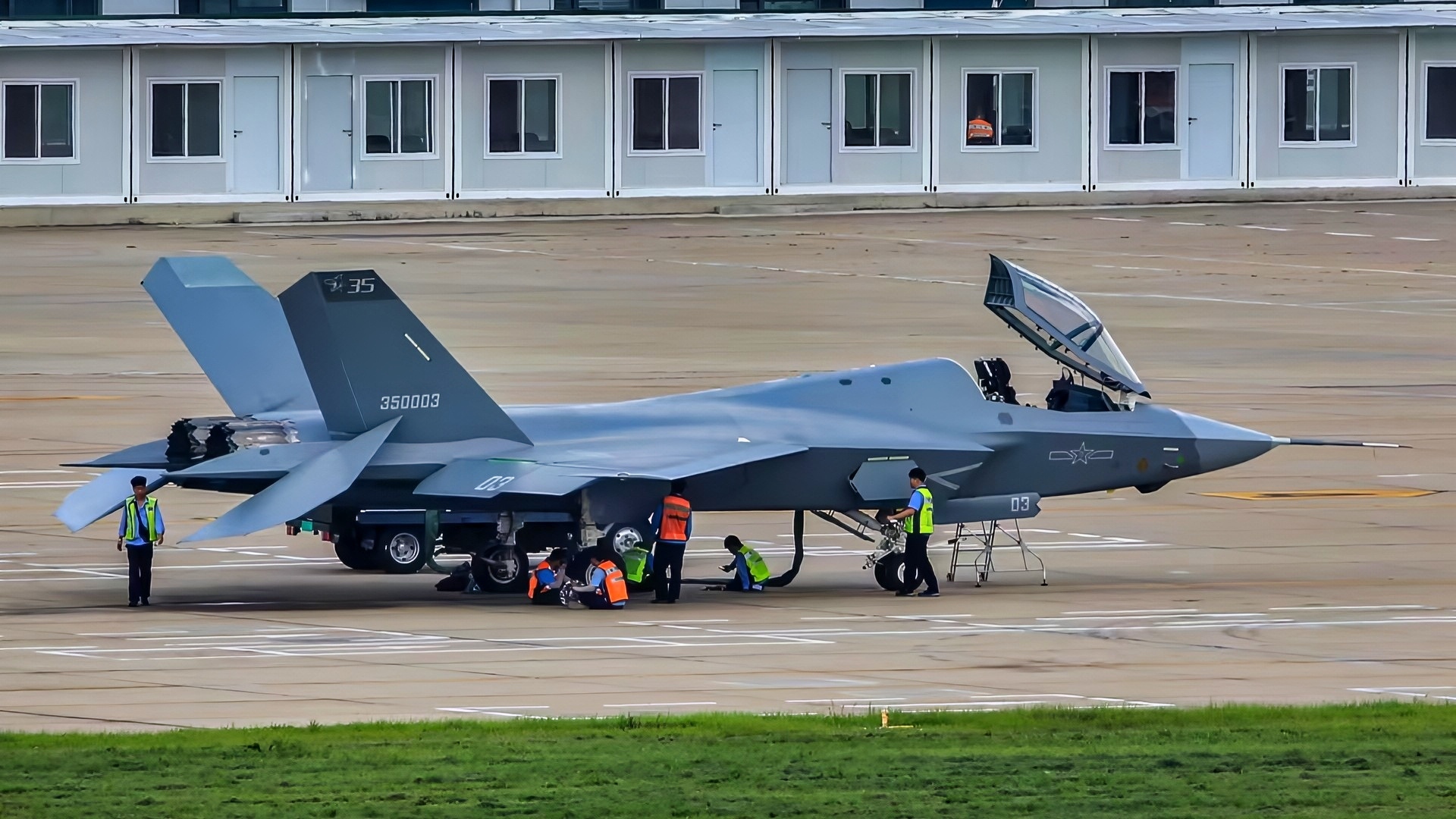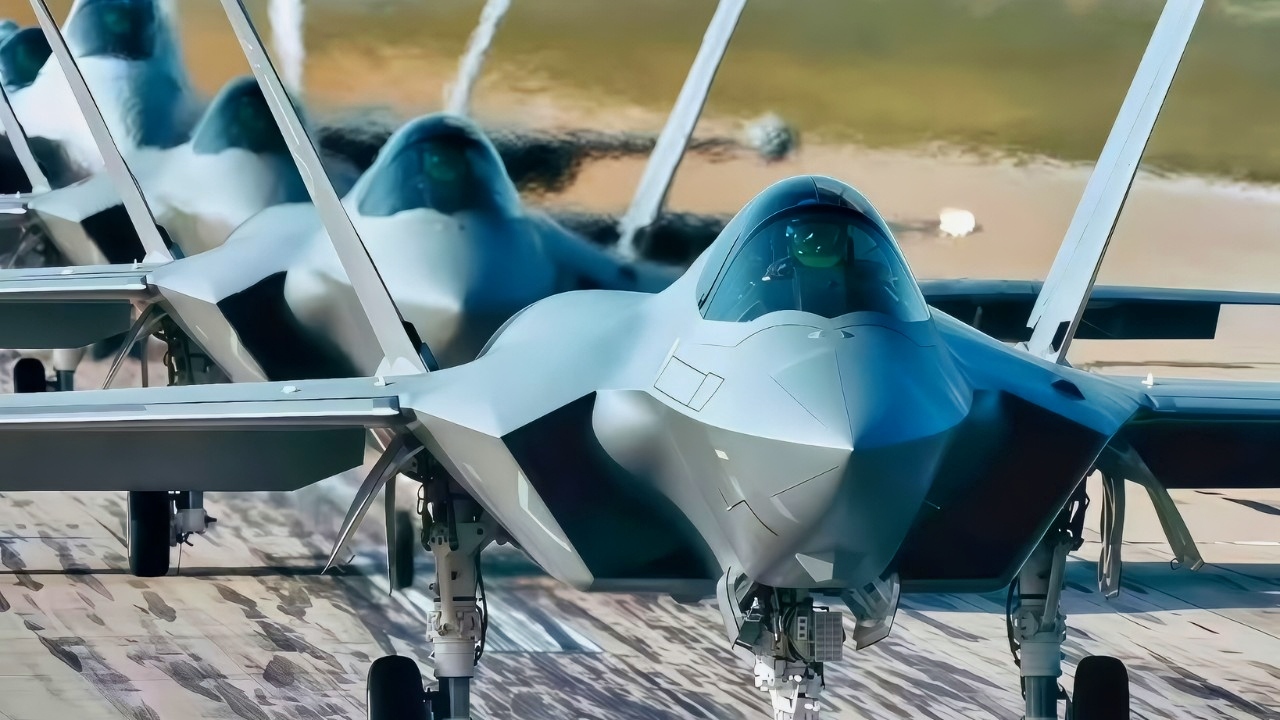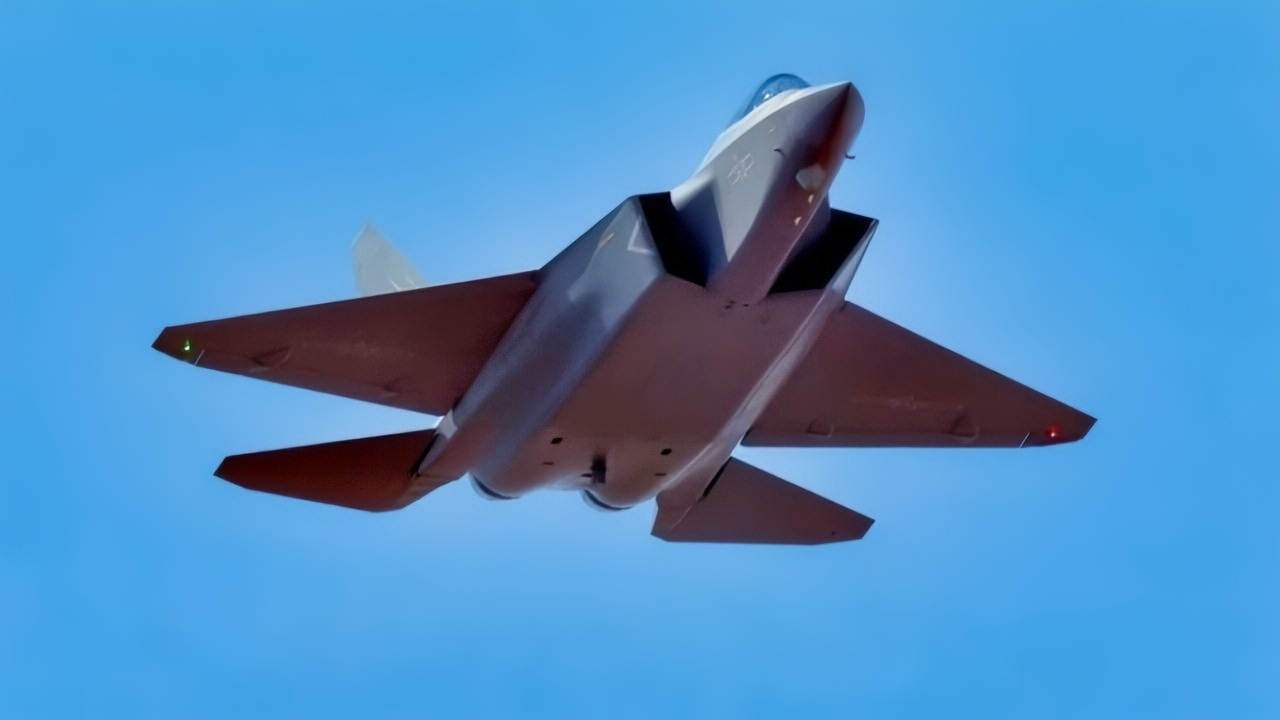Key Points and Summary – China just offered its clearest tease yet of the J-35—its carrier-borne, fifth-gen stealth jet—posing on the deck of the new Fujian.
-At first glance it’s a doppelganger of the U.S. Navy’s F-35C: blended nose, F-35-style inlets, and smooth, low-observable shaping.

J-35 New Stealth Fighter from China
-State media even hints the jet’s radar cross-section is “palm-sized,” but stealth is more than curves.
-True survivability will hinge on engine heat management, coatings, internal systems, and signature control at sea.
-The airframe suggests serious intent. The unanswered question is whether China’s materials, sensors, and thermal control can match the look—because in stealth, the finish matters as much as the form.
China’s J-35: A “Palm-Sized” Stealth Signature—or F-35 Look-Alike?
The People’s Republic of China (PRC) teased yet another glimpse of its anticipated 5th-generation fighter jet.
A photograph of the front end of China’s carrier-launched 5th-generation stealth fighter, the J-35, published in the PRC government-backed Global Times newspaper, shows a fighter that is almost indistinguishable from the United States’ F-35.
Such a similarity, long noticed by observers, is unlikely to surprise Pentagon weapons planners who have referenced the PLA’s “copycat” tendencies for many years.
What is significant, however, is the potential accuracy of recent comments in the Chinese state media that the J-35’s radar cross-section is comparable to that of a “sparrow” or a “human palm.”

China J-35 Fighter on Runway. Image Credit: PLAAF.
The photo in the PRC newspaper shows the J-35 on the deck of China’s famous and recently launched Fujian aircraft carrier, and the front end of the aircraft very closely resembles the front “third” of a US Navy F-35C.
The J-35 certainly appears stealthy, as its nose radome and canopy are rounded and blended into a smooth surface designed to generate little or no return signal to ground-based radar systems. The front of the F-35 appears slightly larger and more angled than that of the J-35; however, the front nose radome and radar sections of both aircraft look nearly identical.
J-35: Smooth, Blended Wing-Body
Interestingly, much of the remaining portions of the J-35 seem to resemble those of an F-22, given that there are two smooth, rounded horizontal tails and a rounded dual-engine fuselage and exhaust area. Overall, the J-35 appears smooth, sleek, rounded, and blended, giving it great stealth potential.
The absence of angled vertical structures, in particular, is by design intended to prevent electromagnetic pings from ground radar from having defined shapes and contours to bounce off of and generate a return signal or rendering.
Therefore, a quick examination of the external configuration of the J-35 would seem to indicate that the PRC’s comments about its low radar cross-section may hold validity.
Overall, the J-35 fuselage appears sleek, smooth, and stealthy, as it seems more purely horizontal than most 5th-generation aircraft.
A somewhat horizontal, blended wing-body configuration for a fighter jet begins to approach a “bomber-like” advanced stealth, characterized by the absence of vertical or protruding structures.
The J-35 features F-35-like tails protruding from the back for vectoring. It appears to utilize F-35-like fuselage-aligned Divertless Supersonic Inlet air intakes, designed to redirect slow-moving air from the engine and effectively shield or “hide” the engine fan from enemy radar.
More than External Configuration
Stealth effectiveness depends on much more than external configuration, as it consists of a host of variables, including thermal management, radar-absorbent materials, engine placement, and temperature.
The closer the temperature of a stealth aircraft is to that of the surrounding atmosphere, the stealthier it becomes. Such a signature leaves no margin of difference for infrared sensors to detect.
Thermal management is critical, as stealth aircraft are specifically engineered to emit very little heat, which is challenging given the engine thrust required to achieve speeds of Mach 2 or greater. Some aircraft are known to use IR suppressors, essentially technologies designed to minimize or dissipate and decrease heat coming from an aircraft.

J-35 Fighter In Elephant Walk PLAAF Photo.
This is also a reason why stealth aircraft have internally buried engines, as engines are, of course, great sources of heat. Fifth-generation fighter jets are equipped with specialized cooling liquids and technologies designed to prevent the aircraft’s avionics and electronics from generating excessive heat.
Coating materials are also critical, as advanced stealth aircraft are known to be built with highly specialized radar-absorbent materials designed to absorb electromagnetic pings and not simply “bounce” them back to enable ground radar to develop a rendering of the aircraft.
About the Author: Kris Osborn, Warrior Maven President
Kris Osborn is the President of Warrior Maven – Center for Military Modernization. Osborn previously served at the Pentagon as a highly qualified expert in the Office of the Assistant Secretary of the Army—Acquisition, Logistics & Technology. Osborn has also worked as an anchor and on-air military specialist at national TV networks. He has appeared as a guest military expert on Fox News, MSNBC, The Military Channel, and The History Channel. He also has a Masters Degree in Comparative Literature from Columbia University.
More Military
The P-8A Poseidon Might Be the Ultimate Submarine Hunter
The S-3 Viking: The Best Submarine Killer Retired?
Aircraft Carrier USS Nimitz Has A Message for the U.S. Navy
X-43A: It Could Hit Mach 9.6 and NASA Walked Away
Trump Wants a U.S. Navy Battleship Comeback: Reality Has Other Ideas










